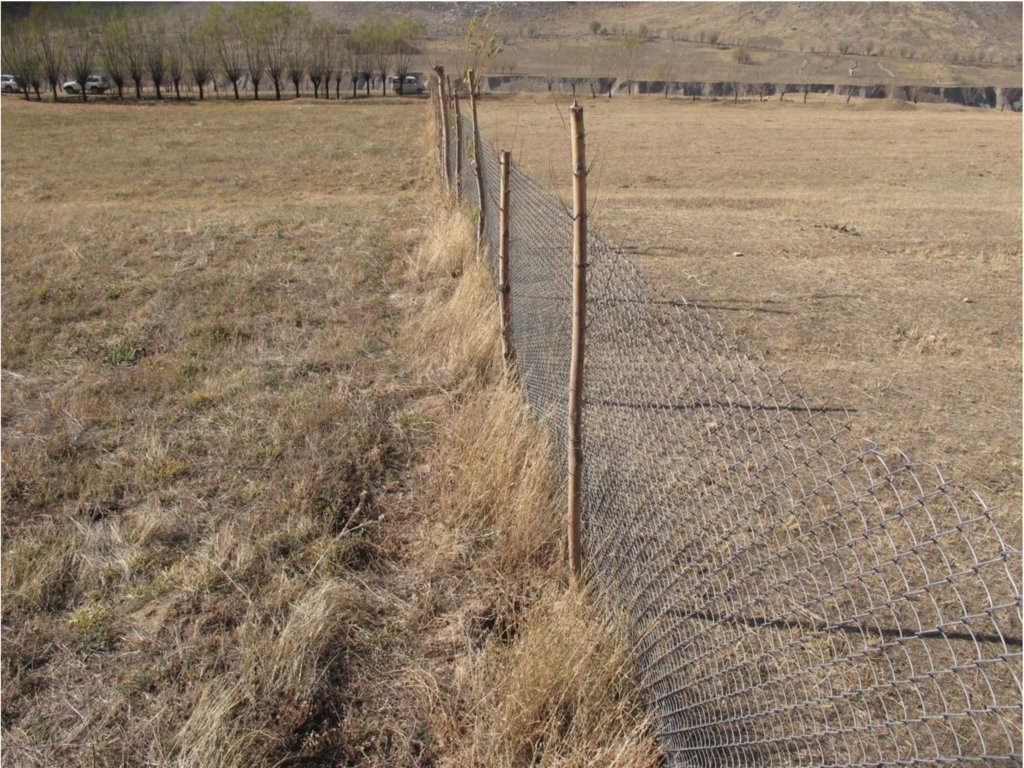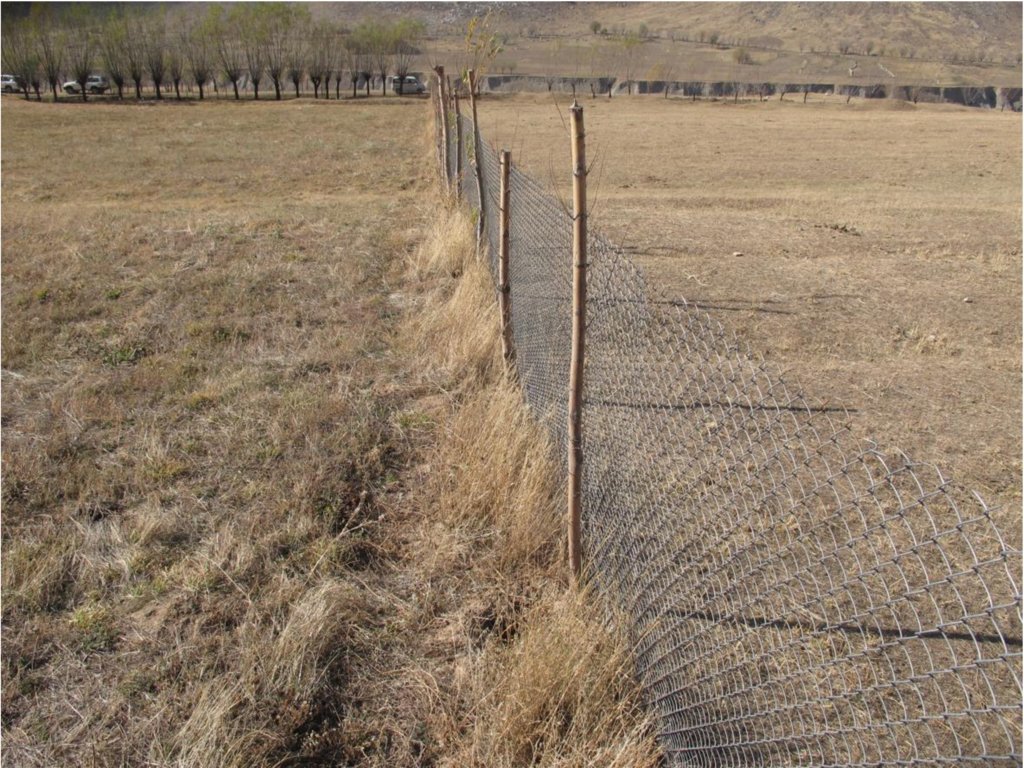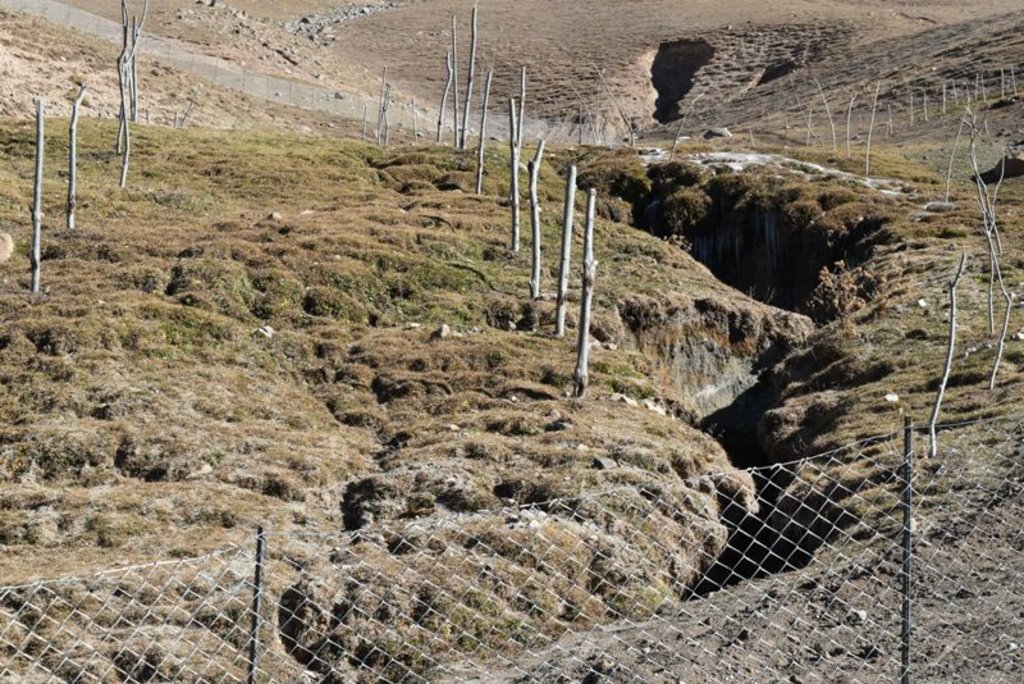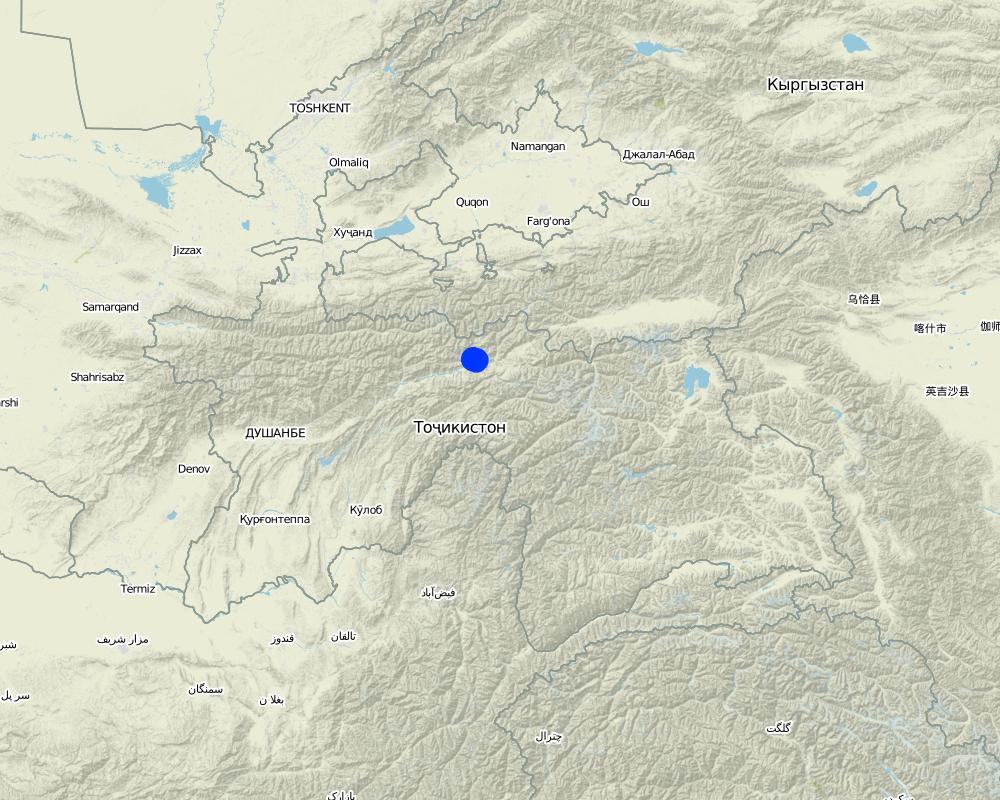Rehabilitation of Pasture Land through fencing [Tajikistan]
- Creation:
- Update:
- Compiler: Askarsho Zevarshoev
- Editor: –
- Reviewers: Yacime Khadraoui, Maximilian Knoll
Баркароркунии чарогох бо усули махкамкунии гирду атрофи он
approaches_3463 - Tajikistan
View sections
Expand all Collapse all1. General information
1.2 Contact details of resource persons and institutions involved in the assessment and documentation of the Approach
Name of project which facilitated the documentation/ evaluation of the Approach (if relevant)
Integrated Health and Habitat Improvement in Rasht Valley, TajikistanName of the institution(s) which facilitated the documentation/ evaluation of the Approach (if relevant)
Aga Khan Foundation (AKF) - Switzerland1.3 Conditions regarding the use of data documented through WOCAT
When were the data compiled (in the field)?
25/12/2016
The compiler and key resource person(s) accept the conditions regarding the use of data documented through WOCAT:
Yes
1.4 Reference(s) to Questionnaire(s) on SLM Technologies
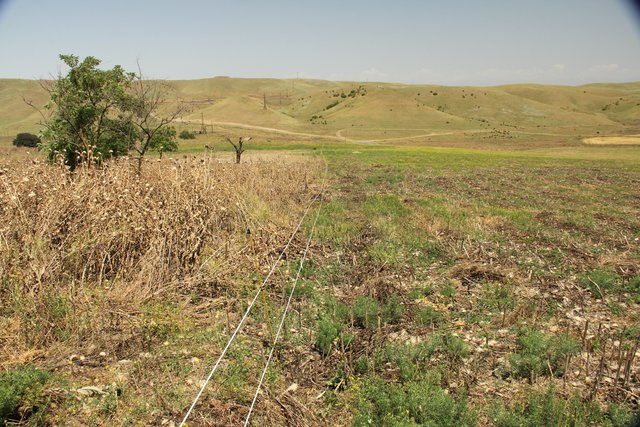
Establishment of a paddock system and improvement of … [Georgia]
In a pilot project, degraded pastureland near the settlement of Kasristskali was regenerated by introducing a fencing, mowing and grazing regime that favours the growth of forage plants instead of weeds and, where necessary, reseeding forage plants.
- Compiler: Hanns Kirchmeir

Pasture management in Western Pamir [Tajikistan]
Pasture management through introduction of a new pasture rotation technique focusing on pasture capacity
- Compiler: Aslam Qadamov
2. Description of the SLM Approach
2.1 Short description of the Approach
The approach demonstrates the effect and importance of rotational grazing by fencing certain areas of land in pasture areas as well as it demonstrates the rehabilitation process in comparison to the open space which is overgrazed. The approach involves mobilizing communities to observe the rehabilitation process by not grasing in the area for a certain period of time.
2.2 Detailed description of the Approach
Detailed description of the Approach:
Community member’s understanding, especially the members of PUUs, is low on the rehabilitation techniques of degraded pasture and the effect of rotation on a timely use of different pasture plots. In order to demonstrate the result of grazing a demonstration site in the area of one hectare was fenced. In comparison to this plot the community routinely grazed the open space, next to the fenced plot. In a short period of one season the result demonstrates that the plot, which is fenced, is faster rehabilitated compared to the open space next to it, which was uncontrolled grazed by the community .
The result also shows that productivity is increased in that plot and was used for collecting fodder for off-season during wintertime.
Through organizing field days and exposure of farmers to this area, farmers understanding on applying rotation and sustainable use of pasture area is increased.
The approach was applied in the open field of community pasture, which has been previously overgrazed and abandoned as unused land. In collaboration with the community level organization the land use rights were arranged for one of the land users and the territory was fenced in the area of one hectare. The fenced area was protected for only one season but showed good results compared to the open field next to it nonetheless.
In a short period the approach demonstrates how effective applying a sustainable grazing plan is, which land users also liked. Community members, who also owned livestock acquired a simple approach to protect their pasture and applied the approach when developing their pasture and livestock management plan.
2.3 Photos of the Approach
General remarks regarding photos:
By visualizing the process of rehabilitation of the degraded pasture compared to the one which is not fenced, it is clearly demonstrated in a short period of time how effective it is to control grazing. In the pasture area which is overgrazed by community, the grazing is now banned in the degraded area. The area is fenced and trees are planted inside to stabilize the land.
2.5 Country/ region/ locations where the Approach has been applied
Country:
Tajikistan
Region/ State/ Province:
Central Asia/Tajikistan/Rasht Valley
Further specification of location:
Sub-ordinate district of the republic
Map
×2.6 Dates of initiation and termination of the Approach
If precise year is not known, indicate approximate date when the Approach was initiated:
less than 10 years ago (recently)
2.7 Type of Approach
- recent local initiative/ innovative
2.8 Main aims/ objectives of the Approach
The main objective to use this approach is to raise awareness of the community members on the cause of overgrazing and demonstrating the technique of rehabilitation and sustainable use of pasture through effective pasture rotations.
2.9 Conditions enabling or hindering implementation of the Technology/ Technologies applied under the Approach
social/ cultural/ religious norms and values
- enabling
There are no obstacles from any norms to contribute to the sustainable use of the natural resource. The religious and cultural norms are motivating sustainable use of pasture resource, especially the religious norms considering the nature as a gift from heaven.
availability/ access to financial resources and services
- hindering
Access to materials for fencing the big area of land in other communities for replication can be problematic.
Moreover, pasture land is considered as common community resource, therefore there are less incentives for investing financial resources.
land governance (decision-making, implementation and enforcement)
- enabling
The approach motivates ownerships interest over land resources and demonstrates the private interest in protection and rehabilitation of the land resource.
knowledge about SLM, access to technical support
- enabling
The approachnot is not very technically, just simple fencing which is applied in all aspects by community.
workload, availability of manpower
- hindering
Because of high rate of migration of youth there is not enough manpower available in these rural areas, which is making it difficult for older generation to work in the field.
3. Participation and roles of stakeholders involved
3.1 Stakeholders involved in the Approach and their roles
- local land users/ local communities
members of dehkan/peasant farms, land owners
to serve as manpower to fence and protect from herds encroachment into the plot
- community-based organizations
village organizations
organize and mobilize communities to learn from the demonstration and incentives to establish similar plots into their pasture areas.
- researchers
from university
to observe the process of rehabilitation and the trends of degradation prevention
- local government
land committee, environmental protection committee
support by providing land title over the land plot and provide incentive for rehabilitation of such degraded lands
3.2 Involvement of local land users/ local communities in the different phases of the Approach
| Involvement of local land users/ local communities | Specify who was involved and describe activities | |
|---|---|---|
| initiation/ motivation | passive | Community members that grazed in the area and did not have official ownership over the land were not very interested in rehabilitation of the degraded lands, as they have other open areas for grazing. |
| planning | passive | The community is not very much aware of the effect and impact of approach in contributing into the prevention of degradation. |
| implementation | interactive | External support from project motivates community members to work by themselves and to follow up on the process. |
| monitoring/ evaluation | interactive | During the monitoring by project staff, community members were interested to learn and observe the rehabilitation process. |
3.4 Decision-making on the selection of SLM Technology/ Technologies
Specify who decided on the selection of the Technology/ Technologies to be implemented:
- mainly SLM specialists, following consultation with land users
Explain:
The process is discussed during the planning process and followed by an agreement to test for demonstration.
Specify on what basis decisions were made:
- personal experience and opinions (undocumented)
4. Technical support, capacity building, and knowledge management
4.1 Capacity building/ training
Was training provided to land users/ other stakeholders?
Yes
Specify who was trained:
- land users
If relevant, specify gender, age, status, ethnicity, etc.
Mainly men, who were involved in the grazing of animal participated in the trainings.
Form of training:
- on-the-job
Subjects covered:
Pasture management techniques on how to graze; the impact of overgrazing; how to protect pasture; carrying capacity of pasture.
4.2 Advisory service
Do land users have access to an advisory service?
Yes
Specify whether advisory service is provided:
- on land users' fields
Describe/ comments:
During the field visit technical support and recommendation were provided to land users.
4.3 Institution strengthening (organizational development)
Have institutions been established or strengthened through the Approach?
- no
4.4 Monitoring and evaluation
Is monitoring and evaluation part of the Approach?
Yes
Comments:
Monitoring of the approach from time to time shows the clear result of the approach effects. During monitoring, project technical staff checked the progress and evaluated the results on how the situation changed with applying the approach. The difference was reflected in the progress reports and also shared with land users to better understand the approach implementation results.
If yes, is this documentation intended to be used for monitoring and evaluation?
No
4.5 Research
Was research part of the Approach?
No
5. Financing and external material support
5.1 Annual budget for the SLM component of the Approach
Indicate the annual budget for the SLM component of the Approach in US$:
1200.00
Comments (e.g. main sources of funding/ major donors):
ELMARL project, funded by World Bank and implemented by Committee on Environmental Protection
5.2 Financial/ material support provided to land users
Did land users receive financial/ material support for implementing the Technology/ Technologies?
Yes
If yes, specify type(s) of support, conditions, and provider(s):
The project is funded by SDC, implemented by MSDSP and materials for fencing (nets, columns etc,.) were provided under this project to community.
5.3 Subsidies for specific inputs (including labour)
- construction
| Specify which inputs were subsidised | To which extent | Specify subsidies |
|---|---|---|
| net for fencing | fully financed | fencing materials (nets, columns for fixing the net) was provided to fence the area around |
If labour by land users was a substantial input, was it:
- voluntary
5.4 Credit
Was credit provided under the Approach for SLM activities?
No
5.5 Other incentives or instruments
Were other incentives or instruments used to promote implementation of SLM Technologies?
No
6. Impact analysis and concluding statements
6.1 Impacts of the Approach
Did the Approach empower local land users, improve stakeholder participation?
- No
- Yes, little
- Yes, moderately
- Yes, greatly
Land users learnt how effective the approach can contribute to the rehabilitation of degraded pasture area as a result of overgrazing.
Did the Approach help land users to implement and maintain SLM Technologies?
- No
- Yes, little
- Yes, moderately
- Yes, greatly
Simple technology of fencing was applied to demonstrate the effect of the chosen approach.
Did the Approach improve gender equality and empower women and girls?
- No
- Yes, little
- Yes, moderately
- Yes, greatly
Women/girls who are mainly responsible for fodder provision to livestock appreciate the approach, because it can easily can easily help to provide big amounts of fodder.
Did the Approach improve issues of land tenure/ user rights that hindered implementation of SLM Technologies?
- No
- Yes, little
- Yes, moderately
- Yes, greatly
Those community members who do not own land are provided with incentives to get access to the those land abandoned and overgrazed. They are supported by the fencing project to rehabilitate and cultivate additional fodder crops.
Did the Approach improve the capacity of the land users to adapt to climate changes/ extremes and mitigate climate related disasters?
- No
- Yes, little
- Yes, moderately
- Yes, greatly
The approach motivates land users to rehabilitate degraded pastures, which also prevents natural hazards and improve carbon sequestration.
Did the Approach lead to employment, income opportunities?
- No
- Yes, little
- Yes, moderately
- Yes, greatly
Through improving land conditions fodder was collected from the area, which brought additional income as the need to buy additional fodder for livestock was lowered.
6.2 Main motivation of land users to implement SLM
- increased production
increased fodder production
- increased profit(ability), improved cost-benefit-ratio
improved livestock conditions and profit from selling livestock products
- reduced land degradation
After fencing and controlling the grazing the grass started to grow and slowly the land was rehabilitated.
- reduced risk of disasters
In the slopes area, where grazing was prevented the land cover (grass-biomass) improved and stabilized the slopes.
- enhanced SLM knowledge and skills
Through field days knowledge on use of SLM improved and applied in other communities.
6.3 Sustainability of Approach activities
Can the land users sustain what has been implemented through the Approach (without external support)?
- yes
If yes, describe how:
When land users knowledge and understanding improved on how controlled grazing can contribute to pasture rehabilitation they started to apply the approach in a bigger pasture area. After the approach showed good results the community started to consider rotational grazing in their pasture and livestock management plan, which the community develops every year.
6.4 Strengths/ advantages of the Approach
| Strengths/ advantages/ opportunities in the land user’s view |
|---|
| rehabilitation of the pasture |
| clear demonstration of results in a short period of time |
| Strengths/ advantages/ opportunities in the compiler’s or other key resource person’s view |
|---|
| demonstrates results in a short term |
| affordable to demonstrate in different areas |
| easily replicable, cost effective |
6.5 Weaknesses/ disadvantages of the Approach and ways of overcoming them
| Weaknesses/ disadvantages/ risks in the compiler’s or other key resource person’s view | How can they be overcome? |
|---|---|
| Failure because of other external shocks may results in land users not perceiving the approach . | should be well documented to show the effect |
7. References and links
7.1 Methods/ sources of information
- field visits, field surveys
During peer reviews, the condition of the land fenced was found to be very attractive compared to the previous, when used openly.
- interviews with land users
2
- compilation from reports and other existing documentation
one
7.2 References to available publications
Title, author, year, ISBN:
Zevarshoev Askarsho, SLM specialist, 2016
Available from where? Costs?
upon request, free of charge
Links and modules
Expand all Collapse allLinks

Establishment of a paddock system and improvement of … [Georgia]
In a pilot project, degraded pastureland near the settlement of Kasristskali was regenerated by introducing a fencing, mowing and grazing regime that favours the growth of forage plants instead of weeds and, where necessary, reseeding forage plants.
- Compiler: Hanns Kirchmeir

Pasture management in Western Pamir [Tajikistan]
Pasture management through introduction of a new pasture rotation technique focusing on pasture capacity
- Compiler: Aslam Qadamov
Modules
No modules



